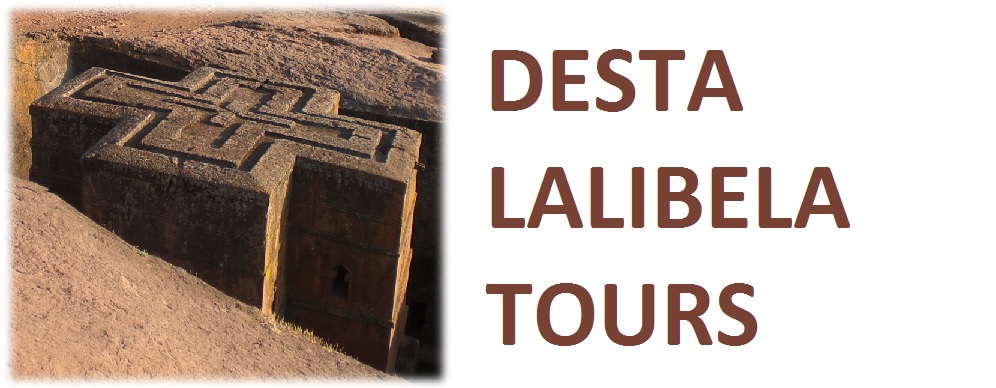Addis Ababa at night
Addis Ababa (the name means 'new flower') is of fairly recent origin - Menelik II founded the city in 1887. Situated in the foothills of the Entoto Mountains and standing 2,400 metres above sea level it is the third highest capital in the world. The city has a population of about two million.
Addis Ababa is an important administrative centre not only for Ethiopia, but also for whole Africa. The headquarter of the UN Economic Commission for Africa was established here in 1958 and it is the site of the OAU's secretariat.
Getting there and away
By Air: Bole International Airport is 5 kilometers from the city centre and is undergoing major extensions, with a new International Passenger Terminal Building under construction: Ethiopian Airlines run a free shuttle bus into the city. Taxis and 'contract taxis' run to and from the city, and leave the city from Piazza area.
By Bus: The two main bus stations in Addis are
- the Autobus Terra near Mercato, and
- the smaller terminal on Ras Mekonen Avenue near the railway station.
All national buses, with the exception of buses to Nazret and Debre Zeyit, leave from the Autobus Terra, whereas buses to Nazret (Adama) and Debre Zeyit (Bishoftu) depart from the terminal in Ras Mekonen Avenue.
Getting Around
Very few streets have names in Addis Ababa, and if they do, they may not be shown on the map. The exception to this is Churchill Avenue which is the main thoroughfare and shopping street in Addis.
It is best to navigate by using landmarks like the Post Office (Posta Bet), Abiot Adebabay (also known as Meskal Square), the station (la gare) and areas like Piazza and Mercato, which are shopping areas. Some roads have one name on the map and another in general use. For example, "Africa Avenue" on the map is universally known as "Bole Road", and "Ras Biru Avenue" as "Debre Zeyit Road".
There is a large and efficient network of blue and white minibuses which cover the town.
Attractions
Africa Hall
Africa Hall is on Menelik II Ave - an imposing symbol of African independence and optimism. It houses the headquarter of the UN Economic Commission for Africa. The huge stained glass windows depict the suffering of the people of Africa.
St George's Cathedral
St George's Cathedral (Arada Giyorgis) lies north of the northern end of Churchill Avenue. Built in 1896 in the traditional octagonal shape to commemorate Ethiopia's victory over the Italians at the battle of Adwa, the Cathedral houses the work of Afewerk Tekle, the renowned Ethiopian artist responsible for the stained glass windows of the Africa Hall. Cathedral opens 08:00-09:00 and 12:00-14:00. There is a small museum in the compound.
The Menelik Mausoleum
The Menelik Mausoleum, built in 1941 to serve as the tombs of emperors and princes, and the Trinity Cathedral are located nearby St. George's. The Trinity Cathedral was built to commemorate Ethiopia's liberation from five years of Italian occupation.
Haile Selassie's Grand Palace
Haile Selassie's Grand Palace is located north east of Churchill Avenue at the end of Close Street. The Emperor had a second residence, Jubilee Palace, on Menelik Avenue, just north of the Ghion Hotel.
National Museum
The small National Museum is located at Han St / Kilo crossroads, just north of St Mary's Church. Guides are the only real source of information, since the exhibits are poorly lLabelled, but they vary in standard. The exhibits are varied, and include Lucy; the female fossile Skeleton, found in northeast Ethiopia in 1974, is believed to be about three and a half million years old. The museum has an extensive collection of artifacts, some predating the Axumite civilization of Tigre. It also includes a selection of the more than 200 designs of crosses found in Ethiopia. It is open from 08:30-12:30 and 13:30-17:30. Near the museum are the lion cages, probably the only place in Ethiopia to see the Abyssinian lion. The cages are probably best not visited by animal lovers.
Menelik II Square
In Menelik II Square stands the imposing equestrian statue of emperor Menelik II, the victor of Adawa. The statue was erected by emperor Haile Selassie and dedicated on the day before his coronation in 1930, in memory of his great predecessor. The square is located outside the main gates of St. George's Cathedral (Genete Tsige Menagesha Kidus Giyorgis), and is close to City Hall.
Meyazia 27 Square (Arat Kilo)
Meyazia 27 Square is the official name of what is popularly known as Arat Kilo, a name that applies both to the square and the surrounding district of the city of Addis Ababa. The monument at the heart of the Square commemorates the victory over the fascist Italian invaders, and the struggle that preceded it (Meyazia 27 on the Ethiopian Calendar, May 5th on the Gregorian Calendar, is both the day that Addis Ababa was occupied by the Fascists, as well as the day that Emperor Haile Selassie returned to his capital in triumph exactly 5 years later).
The Lion of Judah Monument
The Lion of Judah Monument stands in the square in front of Addis Ababa's train station. The golden colored statue of the Lion of Judah in its complete glory stands on a black granite pedestal which is decorated with relief portraits of Emperors Menelik II and Haile Selassie I, and Empress Zewditu, as well as Ras Makonnen. It marks the foot of the city's widest and avenue, Churchill Avenue, which has the impressive Addis Ababa City Hall at it's other end.
